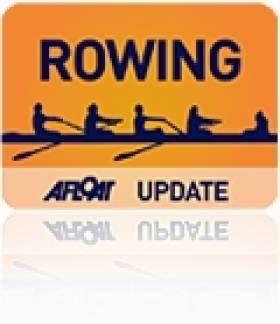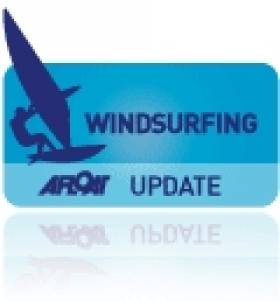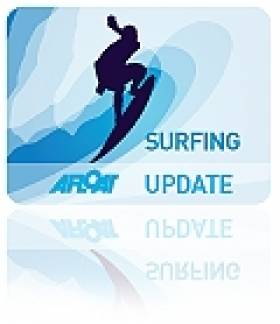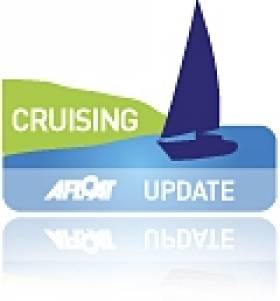Displaying items by tag: Hawaii
Battleborn Reaches Shore In Hawaii in Great Pacific Race
#ROWING: Battleborn, skippered by Irishman Philip Cavanagh, has landed in Hawaii, completing the Great Pacific Race from Monterey in California in 45 days, seven hours and 24 minutes. The crew of Cavanagh, Britons Barry Hayes and Darren Taylor and Australian Dan Kierath were the second home in the race. Their boat, Patience, flew the Irish flag. They arrived in the early hours of the morning, Irish time. Among those waiting on shore were Philip’s parents, Carmel and Michael Cavanagh.
Irish Boat Disputes Lead in Pacific Rowing Race
#OCEAN ROWING: Battleborn, the crew skippered by Irishman Philip Cavanagh and carrying the Irish flag, has been disputing the lead in the Great Pacific rowing race. The crew lay second this morning to Uniting Nations in the race from Monterey in California to Hawaii which is in its seventh day. Battleborn has covered more miles than Uniting Nations but has been heading south of the direct line. According to the organziers Battleborn reported that they may look like they’re going off course “but there will be a strategy … avoiding the rough stuff and catching the handy trade winds.”
Cavanagh’s crew is completed by a Welshman, Barry Hayes, an Englishman, Darren Taylor, and an Australian, Dan Kierath.
First Irish Woman To Windsurf Infamous Hawaiian Wave
#Windsurfing - History has been made in Hawaii with the first Irish woman ever to have windsurfed the infamous 'Jaws' surfing break, as The Irish Times reports.
Twenty-six-year-old Katie McAnena, a doctor from Galway, demonstrated perfect timing as she leapt into the water from an overhanging cliff.
An experienced windsurfer with four Irish women's championships to her name, McAnena told the paper how she maintained caution on the wave and stayed on its shoulder to ride it out.
“The sound and the feeling of it going through my bones was extraordinary, an out-of- body experience,” she said. “I haven’t managed to sleep since.” The Irish Times has more on the story HERE.
It's been an exciting time lately for Ireland's women waverers, as just six months ago northwest surfing scion Easkey Britton became the first woman ever to surf in the waters off Iran.
Leitrim Surfer Learns the Ropes for Reality TV Show
#Surfing - A young surfer from Kinlough talks to the Leitrim Observer about his experiences taking part in the RTÉ series Big Wave Bootcamp, currently showing Fridays at 5pm on RTÉ Two.
Seventeen-year-old Daniel McGlynn was among eight teenagers who were given just three weeks to become expert surfers under the instruction of American surfing professional Ken Bradshaw.
After an audition process for the reality TV series last summer, McGlynn and his fellow teens were flown half-way round the world to Hawaii. But despite the idyllic surroundings, the group faced a punishing training schedule.
“We were in bed at 9 o’clock and up at 6am. We would then train for at least four hours in the day," says McGlynn. "Everything was so much tougher, the waves could be up to 6ft or 7ft tall, even to paddle out on the surf board was a challenge as the current was so much stronger!"
An occasional surfer for almost a decade, McGlynn says he really stepped up his game under the tutelage of Bradshaw.
"He literally taught us everything he knows about the sport, everything. He also rode the biggest wave ever recorded, a massive 86ft in Oahu, Hawaii.”
The Leitrim Observer has more on the story HERE.
Tangled Dolphin Seeks Help From Divers
#MarineWildlife - The Irish Examiner reports on the extraordinary story of a bottlenose dolphin who turned to a group of divers for help to free it from a fishing line.
The video above captures the touching scene when the cetacean approached the divers as they filmed a group of manta rays in the Pacific waters near Kona in Hawaii.
As the footage shows, the dolphin positioned itself in such as way as to allow diver Keller Laros to cut the fishing tackle that was tangled tightly around its midsection and remove the hook from its left pectoral fin.
After the dolphin took to the surface for a quick breather, the divers were able to free it from the line and allow it to swim away unharmed.
Ireland to Showcase 'Planet's Biggest Waves' on 2012 Kite Surf Tour
#KITESURFING - Ireland will be one of four stops on the 2012 Kite Surf Pro World Championship Tour to decide the best wave kitesurfers in the world, Surfer Today reports.
Kicking off in Cascais, Portugal in June before heading to Mauritius in September, the tour will come to Ireland's west coast - described as "Europe's secret kite surfing jewel and home to one of the planet's biggest waves" - from 19-28 October.
According to Surfer Today: "Ireland's Kite Surf Pro will incorporate a unique mobile format, capable of showcasing each day's action at the choicest of locations on the country's wild and swell-abundant west coast."
The tour will wrap up in Maui, Hawaii from 29 November to 8 December, where the €15,000 prize purse wil be up for grabs at the famed surfing venue of Ho'okipa.
Surfer Today has more on the story HERE.
Irish-American Surfs 'World's Biggest Wave'
#SURFING - An Irish-American has ridden what's being called the biggest wave ever surfed in the world.
Garrett McNamara from Hawaii caught the 90-foot monster wave off the coast of Nazaré in Portugal earlier this month, The Irish Times reports.
"Everything was perfect, the weather, the waves," said Northern Irish surfer Al Mennie, who was tow-in surfing with McNamara and English rider Andrew Cotton when the giant swell arose at Praia do Norte.
The offshore area is noted for its deepwater canyon that channels massive swells from the Atlantic.
“As I rode this wave, it seemed pretty massive, but I couldn’t tell quite how big it was,” McNamara told surf forecast site Surfline.
“When I got to the bottom and turned and got around the wave and went to kick out, it landed on me and it felt like a ton of bricks.
"Probably one of the most powerful waves ever to land on me at the shoulder," he added. "It was pretty amazing.”
McNamara - whose family has Irish roots, according to Irish Central - is working with the Portuguese Hydrographic Institute as part of the ZON North Canyon Project, which aims to learn how waves reach such significant heights at Praia do Norte.
See video of the record-shattering wave ride below:
Irish Built Trimaran Ends up on a Beach in Hawaii?
A large portion of the massive craft was washed ashore on Kailua beach last week forcing island authorities to cut it up and remove it. There was no information about its crew but it was obvious from the state of the hulk, whatever beset it, happened a long time ago.
Beachgoers say the barnacle-covered vessel was an eye-sore and a public safety hazard.
"I thought what on earth is that," said Kailua resident Stephanie Langkamp. "Yeah it's like a UFO it really look from far away something really massive an alien really came to the beach."
And while sailors immediately recognised it was part of an old trimaran, the guessing game never stopped. We're not sure how Ireland has been name as the country of build but we'd be pleased to hear from readers.
Click HERE to see the VIDEO. Nice beach, shame about the trimaran!



























